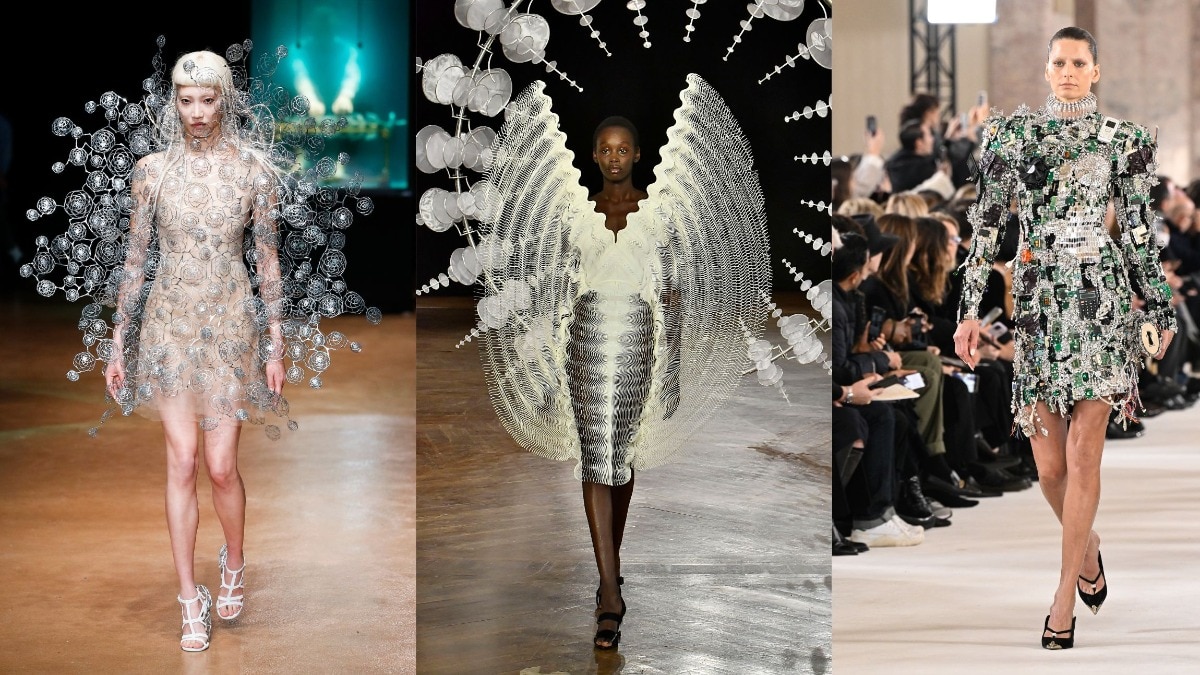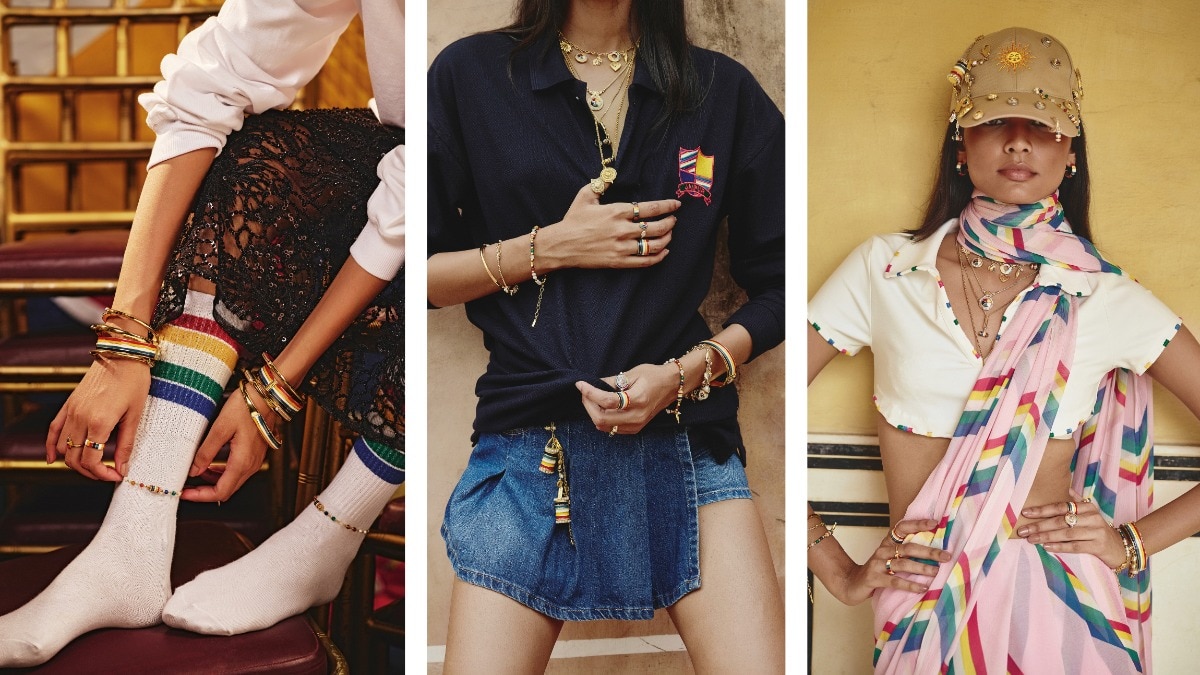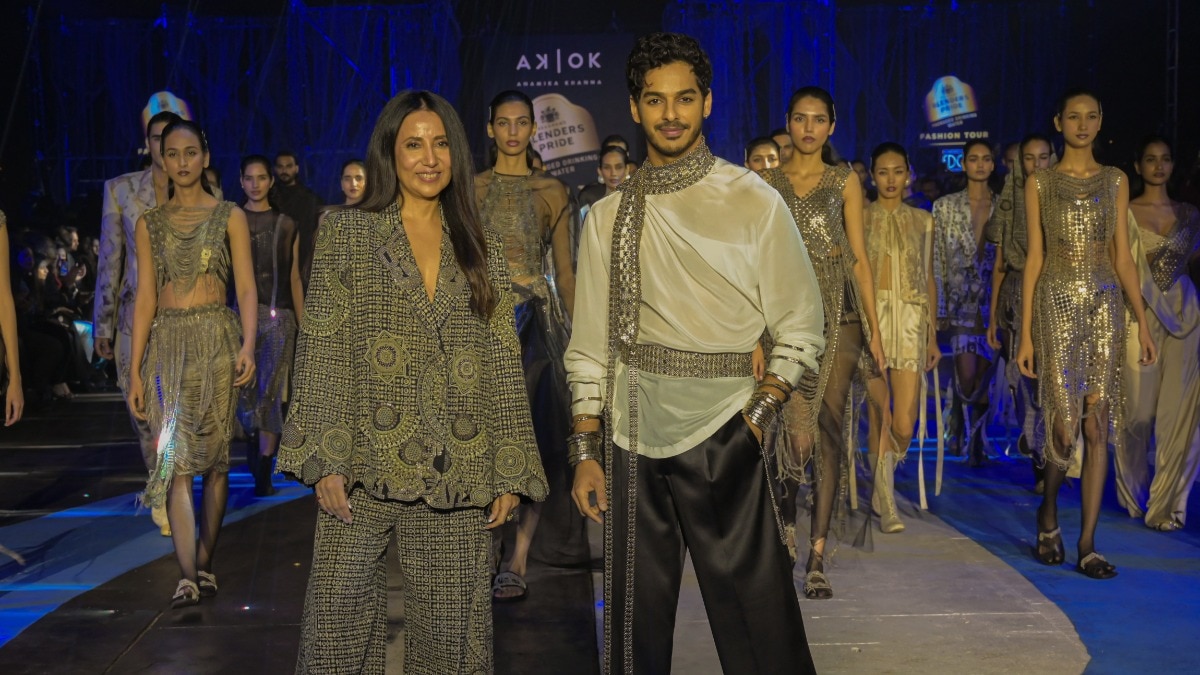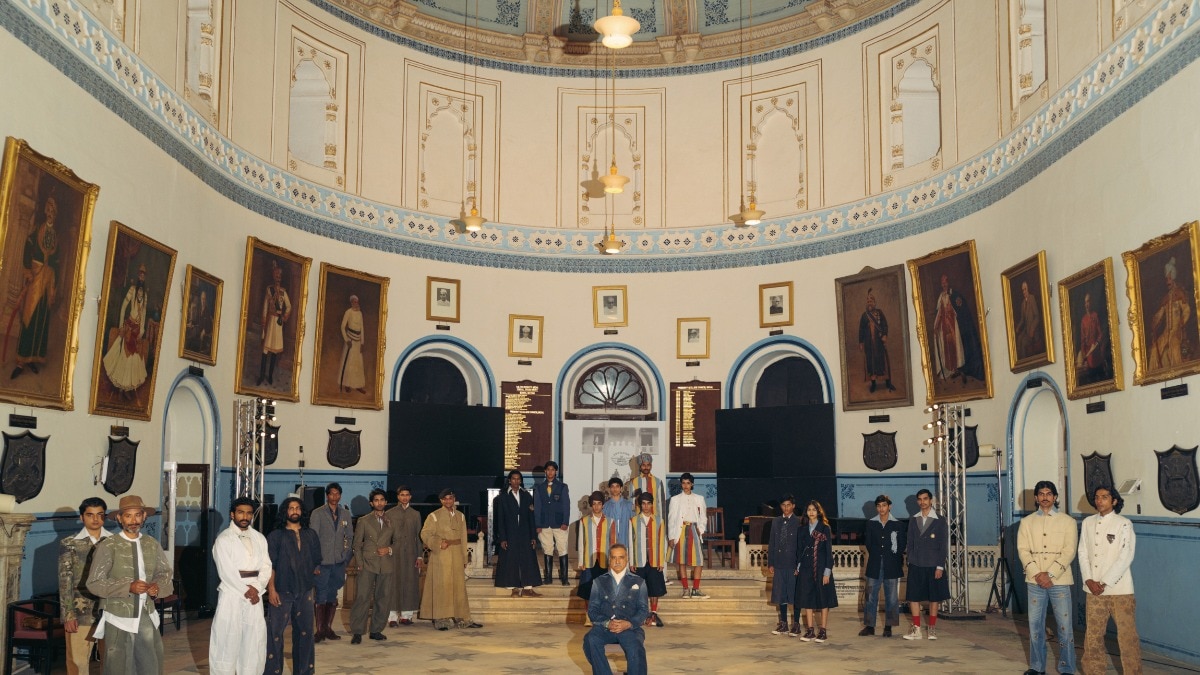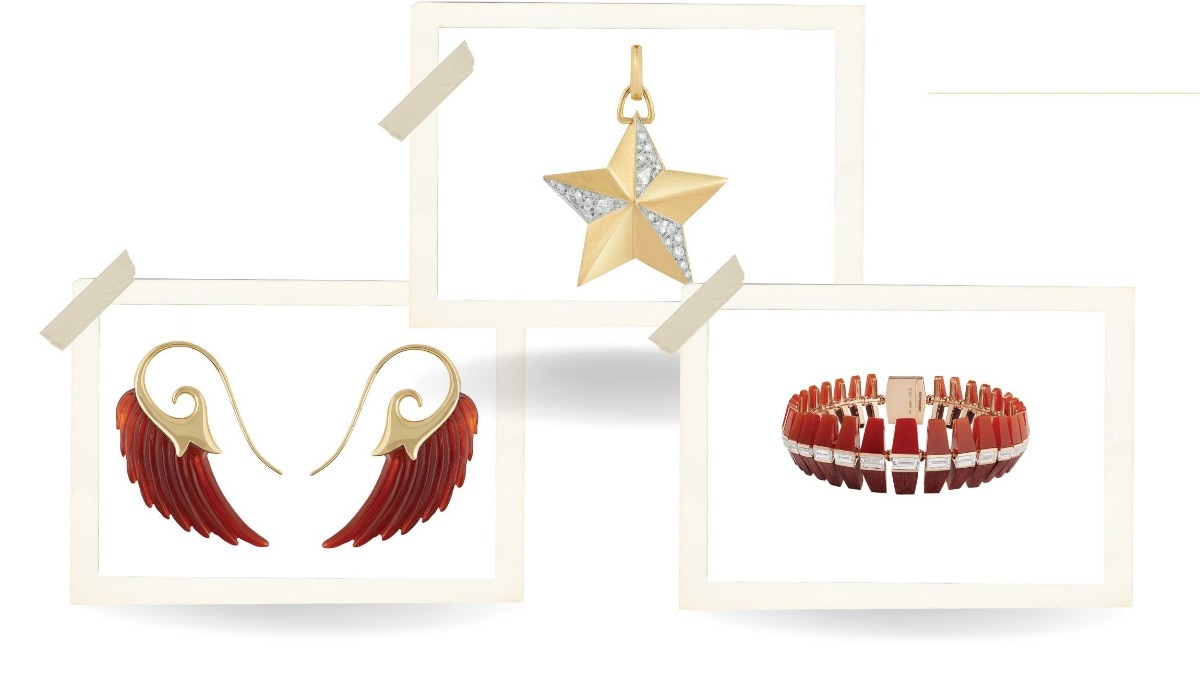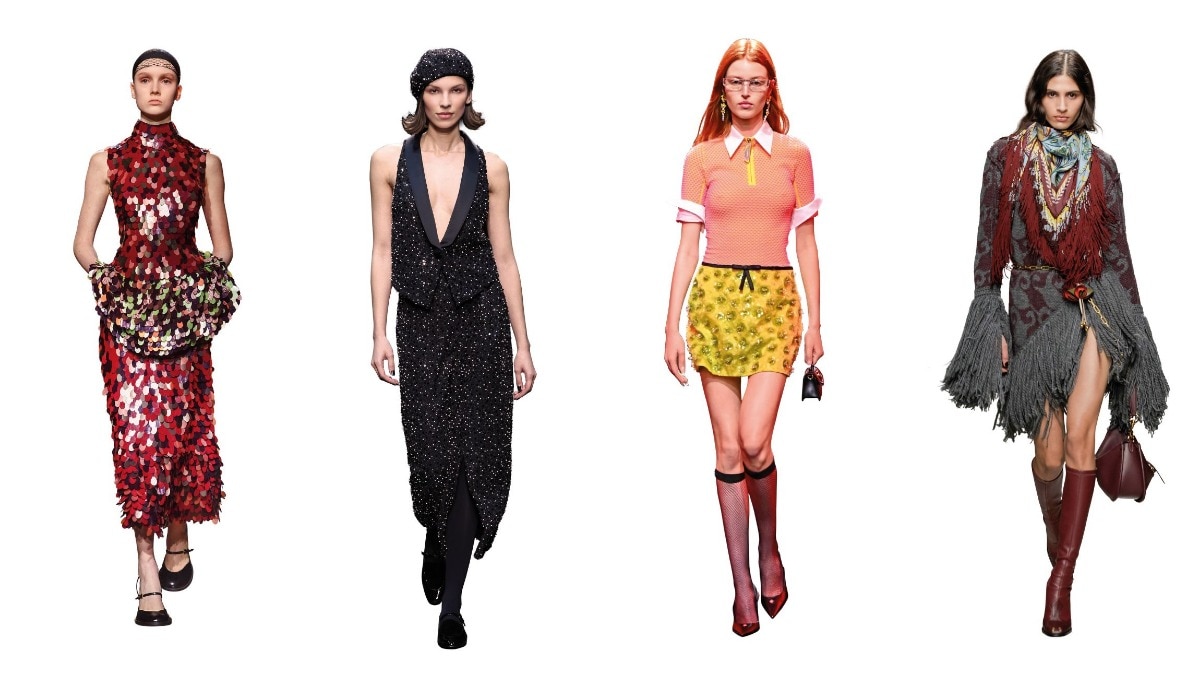Why 2023 is the year of the ‘weird’ girl
On Doja Cat’s new style, the 2012 obsession with moustaches, and the fate of TikTok’s ‘weird girl’ fashion trend.


During spring couture week, the Internet was sent into a frenzy. No, it wasn’t because scientists discovered the world had stopped spinning—instead, the hysteria was triggered by what Doja Cat chose to don front row at Schiaparelli.
When I first saw her look, I had two thoughts simultaneously. The first: Damn, this is cool. The second: People are going to hate it.
I was right, especially about the latter.
Peppered among the myriad positive comments on Bazaar Australia‘s Instagram post of the musician and her outfit, were a few vomit emojis, “WTF is this” and “disgusting” comments, satanic references, and users lamenting that they would rather she wore something “tasteful,” “elegant” or “ladylike”. But Cat was seemingly unbothered by any criticism of the look. Just a few days later she appeared at the Viktor & Rolf couture show wearing false eyelashes as a pair of eyebrows, a moustache, and a soul patch.
Negative commentary around Cat’s style and overall ‘look’ has been present since she shaved her head in August of 2022. Netizens vocalised their concern on TikTok and Instagram, purporting that she was ‘having her Britney moment’ or going through a mental health crisis.
The real reason behind her dramatic transformation? She simply “didn’t like having hair”.
The rapper reflected on her ‘weirdness’—and the public reaction to her off-kilter antics—in a winter 2022 cover story with Dazed, telling journalist Kacion Mayers that in her earliest days online she “would take pictures in my room all day, do crazy make-up, put paint on my face, and flaunt it on the Internet. I loved getting those reactions; it was just my favourite thing, looking like a freak. I really enjoyed that.”
The adverse reaction to Cat’s fashion sense and public persona is not at all unsurprising. As humans, we have an innate desire to fit in. We want to be liked, to be part of the pack, and we have societal norms, expectations and beauty standards that help us navigate where we fit into the social hierarchy. Accordingly, when someone deviates from what is expected—and what is considered beautiful, because that’s what we as women should all strive for, right?—people take notice.
When someone breaks the boundaries of ‘the norm’, it goes one of two ways: They’re branded a visionary, a trendsetter, or a full-blown creative genius; or they’re weird. It is worth noting that when it comes to women, they are more commonly painted with the brush of the latter.
For most of us growing up, being told you were weird was unequivocally an insult. It was a word spat out on a primary school playground or paired with a side-eye at a party. It was an invisible label given with the intention of shaming you.
In 2023, it’s somewhat of a compliment.
While she may have many (rather vocal) haters, Doja Cat is symbolic of the beginnings of a generational vibe shift. Her fans don’t love her in spite of her weirdness, but rather because of it (if you don’t believe me, may I remind you that she shot to fame after dressing up in cow print and singing “B*tch I’m a cow” on YouTube).
This appreciation of one’s authenticity, creativity and overall quirkiness is an attitude that is spreading across social media, with alternative subcultures coming back into popularity and the ‘weird girl aesthetic’ becoming a staple feature of TikTok For You Pages.

With Bella Hadid as its poster girl, #weirdgirlaesthetic, which has garnered over 2.5 million views on the app, is becoming an increasingly popular trend of influence. Characterised by the combining of pieces, patterns, cuts or prints that don’t ‘go together’ in a traditional sense, the look has come to signify that the wearer’s subversiveness makes them ‘cool’ in the digital realm.
While there will always be people who react negatively to this unconventional approach to style—I have seen Instagram comments of people calling Bella Hadid (i.e. 2022’s “most powerful dresser”) one of the worst-dressed celebrities—as a whole, dressing beyond the confines of arbitrary and outdated fashion rules is becoming increasingly more accepted.
For the first time in a while, it’s becoming socially acceptable to be weird. But how long will it last?
Those of us who had the grave misfortune of coming of age in the early 2010s may remember the chokehold that moustaches seemed to have on the fashion world (seriously, they were on everything); and that quirky supermodel Cara Delevingne was the ultimate it-girl of the moment; and posing with your eyes crossed and tongue out was the post du jour across Instagram and Tumblr. It was a time when being quirky (random was the descriptor of choice) was not only accepted, it was cool.
While we may like to think that the 2023 approach to weirdness is more elevated and refined than slapping some moustaches on our clothes, it doesn’t mean that the aesthetic—and the values it reflects—is immune from downfall.
Almost as rapidly as it rose to popularity, the moustache trend suffered a cataclysmic, quick death (pour one out for those who got moustaches tattooed on their fingers). We abandoned the quirky Instagram posts in favour of the duck face, and Kendall and Kylie Jenner took their seats as the new, more ‘normal’ it-girls. ‘Weird’ was insulting again.
Today, given that the ‘weird girl aesthetic’ is a trend driven by social media, it is predictable that its lifespan will be similar to that of the ill-fated moustaches. Perhaps even shorter, given how quickly the modern trend cycle moves.
That being said, post-pandemic there has been somewhat of a shift in the way we feel about ourselves. Social media has allowed people to discover new creatives they may otherwise have never had access to, who serve as inspiration or offer comfort that it is more than okay to embrace your authentic self. It’s an attitude of caring less about what others think and instead doing things and dressing to make ourselves happy.
So, even if the sartorial aspect of the trend goes out of fashion, this appreciation for the alternative, the creative and the downright weird will, hopefully, stick around. (But if it doesn’t, can we all agree to leave Doja Cat alone?)
This piece originally appeared in Harper's Bazaar Australia

